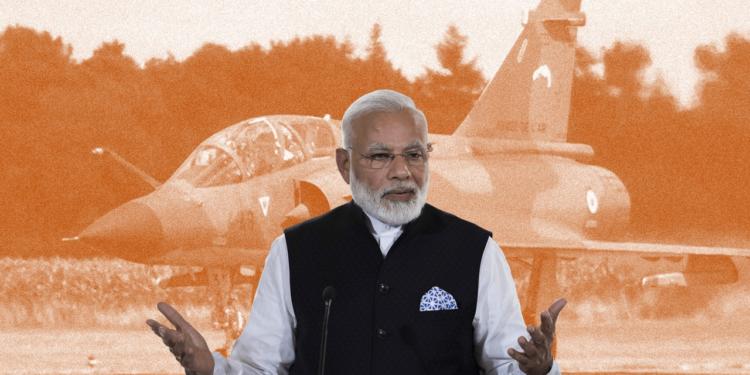An India Today exclusive story has revealed the inside details of the Balakot airstrikes last month, which had resulted in mammoth destruction of Jaish-e-Mohammed terror camps in Pakistan. As per the report, aides say that PM Modi was in deep anguish after he became aware of the Pulwama terror attack that had resulted in the martyrdom of more than 40 CRPF soldiers. As per the report, PM Modi made up his mind to call Pakistan’s fake nuclear threat for once and for all. Till now, Pakistan had been using the nuclear threat in order to blackmail India and negate the possibility of retaliatory measures against Pakistan-sponsored terror attacks in India.
As per the India Today report, Balakot was a carefully chosen target. It was chosen over two other targets because it is situated in mainland Pakistan and striking it would not involve army or civilian casualties. Therefore, the IAF was able to bomb Jaish-e-Mohammed terror camps with impeccable accuracy and precision. This was a smart tactical move. India targeted terror camps and at the same time, Pakistan could not have labelled it an act of war. It was a pre-emptive, non-military action aimed at the destruction of terror camps. India had not targeted civilian areas or military installations. Only terror outfits were targeted and destroyed in a highly accurate manner. Therefore, blame for any escalation would fall squarely on Pakistan.
Balakot was also chosen because striking it also meant giving Pakistan a strong message. India had already crossed the LoC into Pakistan Occupied Kashmir (POK) during the 2016 Surgical Strikes. This time around India had to give an even stronger message. Striking Balakot meant India would hit Pakistani terror factories in mainland Pakistan. The terrorist camp had been set up in 2004-05. It had been under the scrutiny of Indian intelligence agencies for quite some time and the available human intelligence gave it in-depth information about the way that the terror training camp was functioning.
The airstrikes also displayed India’s improved intelligence-gathering capabilities. Minute details of the terror training camps at Balakot had been collected. The high-resolution satellite images of the terror training camp also proved to be of invaluable help to the pilots during the strike. Pakistan was already on high alert following the Pulwama terror attack. International pressure was building up on Pakistan and emotions were running high in India. It was almost certain that India would strike and strike hard. Therefore, the IAF needed to proceed with greater agility, speed and deception. The way India carried out the airstrikes made it clear that India has the ability to strike the terror country at a place and time of its choosing.
According to the India Today report, five bombs successfully struck the targets. Three of them hit the large complex housing 150 terrorists, one of them targeted the building that housed terror trainers and another one struck the U-shaped building that had most of the JeM leadership. All the aircrafts returned safely to their bases that night. Apart from the National Security Advisor, Ajit Doval, Chief of Air Staff, Dhanoa informed the Navy and Army chiefs that the mission had been accomplished. While Pakistan continues to shamelessly refute the reality of having suffered massive damage, this report highlights how the IAF scripted history by successfully striking hard and deep into the Pakistani territory.































